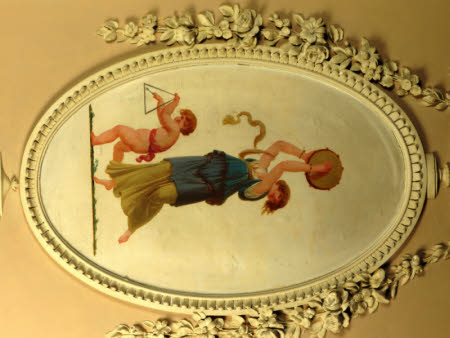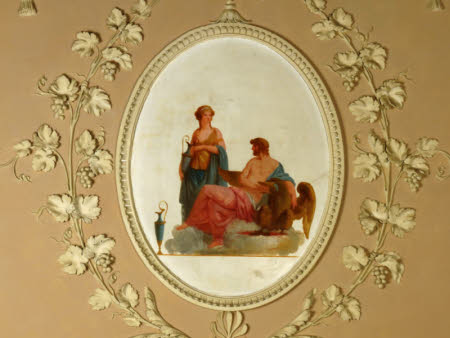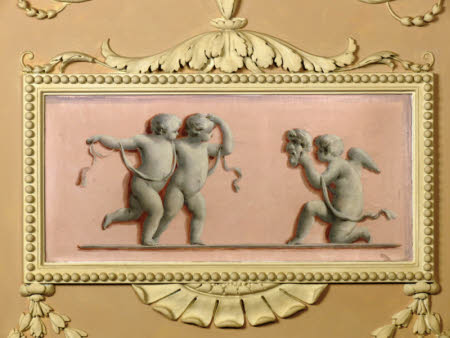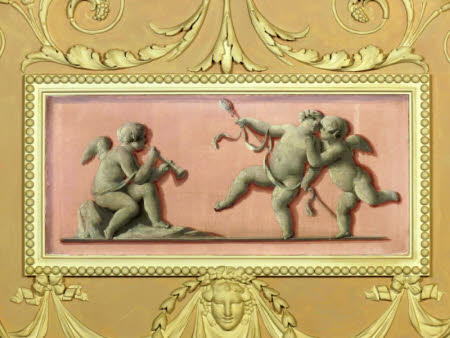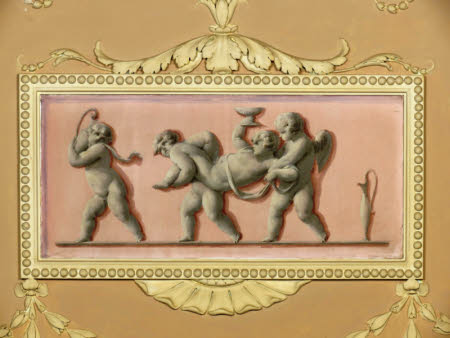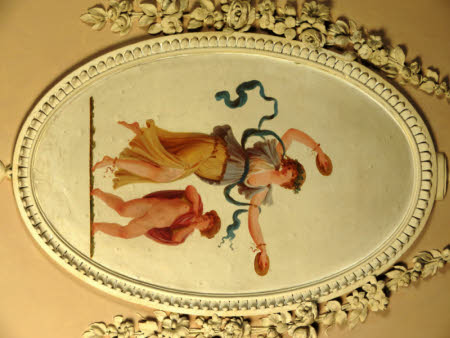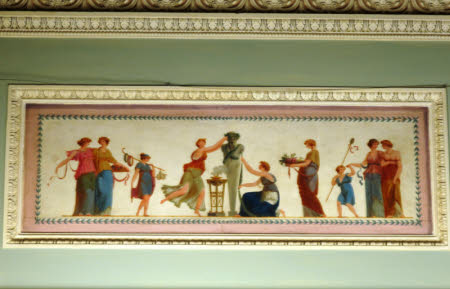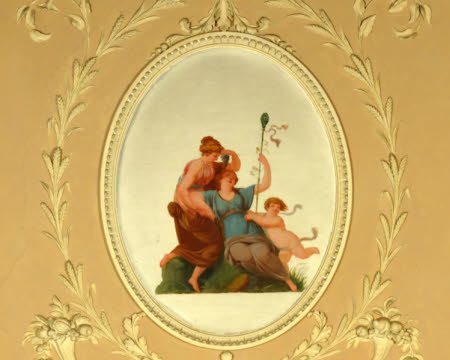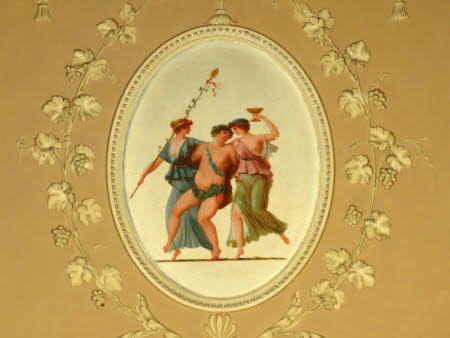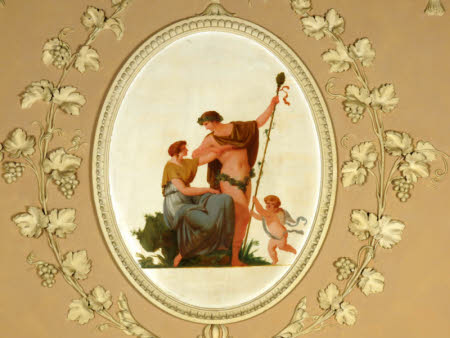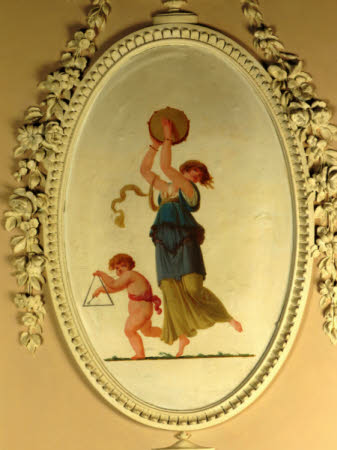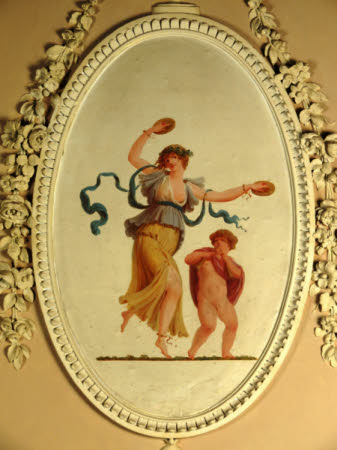Mural painting
attributed to Vincenzo Valdre (1740-1814)
Category
Art / Wall paintings
Date
1770 - 1800
Materials
Paint, Plaster
Order this imageCollection
Calke Abbey, Derbyshire
NT 293043
Summary
A series of sixteen wall paintings painted by Vincenzo Valdre (1740-1814), which are located in the Dining Room at Calke Abbey. The panels are all in the same style and similar colours and show typical Maenads (female followers of the Greek god Dionysus) in their swirling draperies, often with musical instruments and carrying wine jars. Dionysus is the Greek form of the Roman god Bacchus. The figures themselves are not always very well drawn but they do make a very attractive decoration. The intention was that the panels should be seen as an element of the complete decorative scheme and not as significant paintings in their own right. The theme of the decoration in this room is fertility and plenty, with particular reference to the myth of Dionysus. The painted panels depict various episodes from religious rites associated with Dionysus, while the plasterwork depicts wreaths of wheat, fruit and vines. The theme is taken up in the decoration of the fireplace. The design of the decoration of the Dining Room was greatly influenced by the 'antique taste' which, during the second half of the 18th century, extended to all the arts. This was the age of Robert Adam and of neo‑classicism, when the artists reacted against the exuberance of the Baroque and returned to the simplicity of classical art. The archaeological discoveries at Herculaneum and Pompeii stimulated a great interest in all things Roman and this is certainly reflected in the subject matter and style of the wall paintings here. Italian artists working in England were in great demand to paint mural decorations in the fashionable new manner. At Calke Abbey, it might be expected, the artist was not one of the foremost working at the time, but thought to be the somewhat obscure Vincenzo Valdre, who had also painted the Music Room at Stowe several years earlier.
Makers and roles
attributed to Vincenzo Valdre (1740-1814), maker
